Weather Bee | Is the monsoon becoming rainier?
This year’s monsoon prompts the question: Is the season becoming rainier long-term?
India's official monsoon season runs from June to September. This monsoon, India has received 618 mm of rain up to August 14, the 18th highest rainfall since 1901 for this part of the season. Clearly, this is a very rainy monsoon. Since the rain has also led to frequent disasters, this year’s monsoon also prompts another question: Is the season becoming rainier long-term? A look at the India Meteorological Department's (IMD) gridded data shows that the answer is not as simple as it looks.
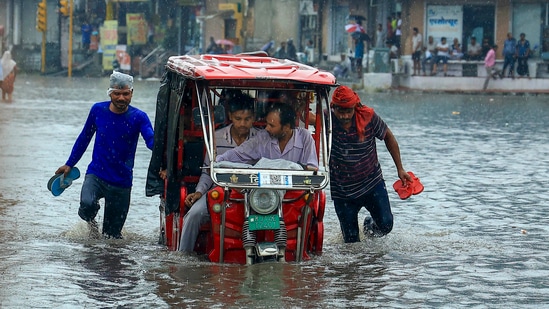
IMD’s gridded data has been available since 1901 and can be analysed to check long-term changes. For example, in the 30-year period ending in 1930, India's total monsoon rain averaged 839 mm.
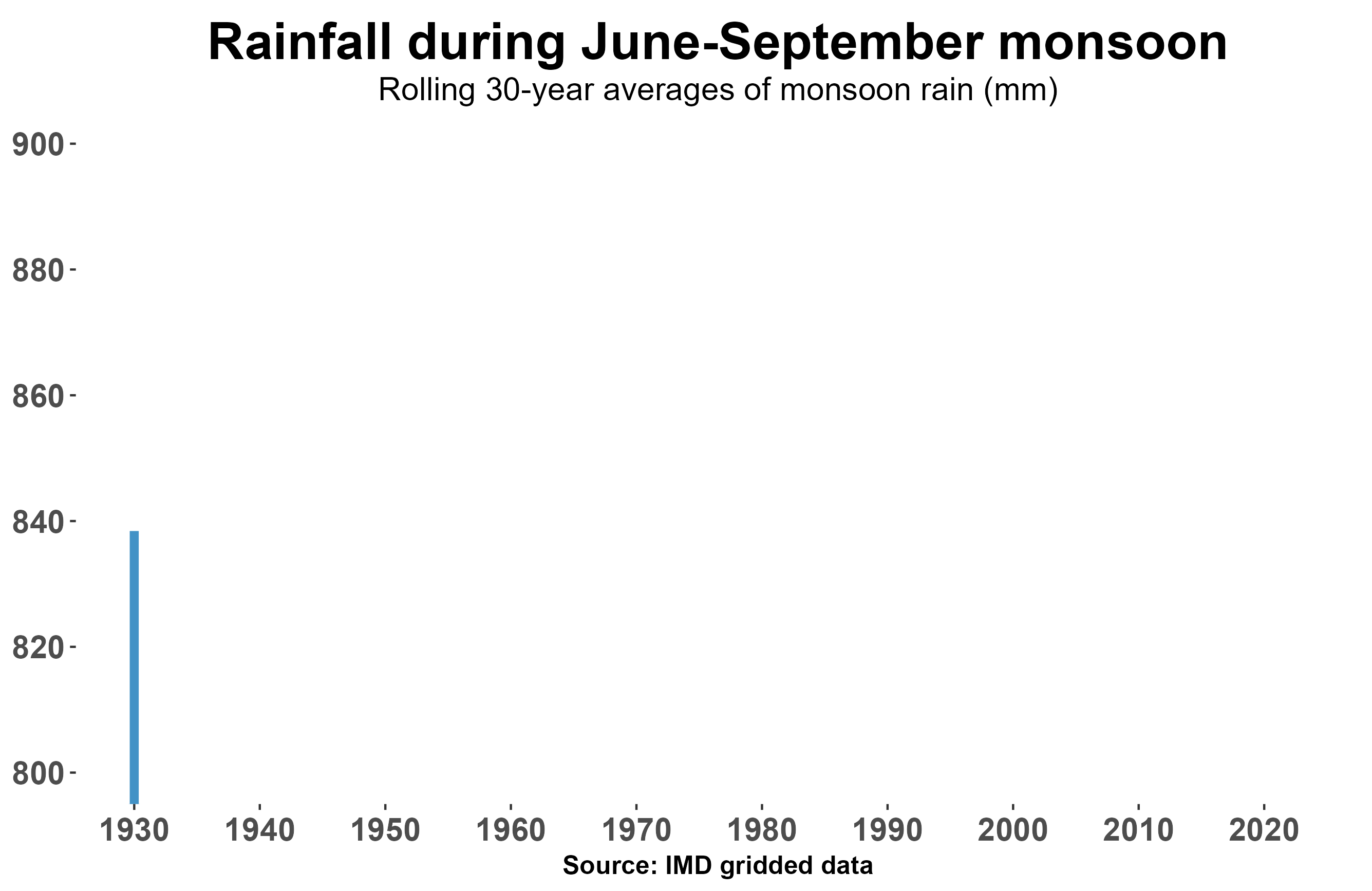
Averaged over a 30-year period, the monsoon rain over India kept increasing in the first half of the 20th century. It reached its peak in 1962. In the 1933-1962 period, total monsoon rain averaged 898 mm.
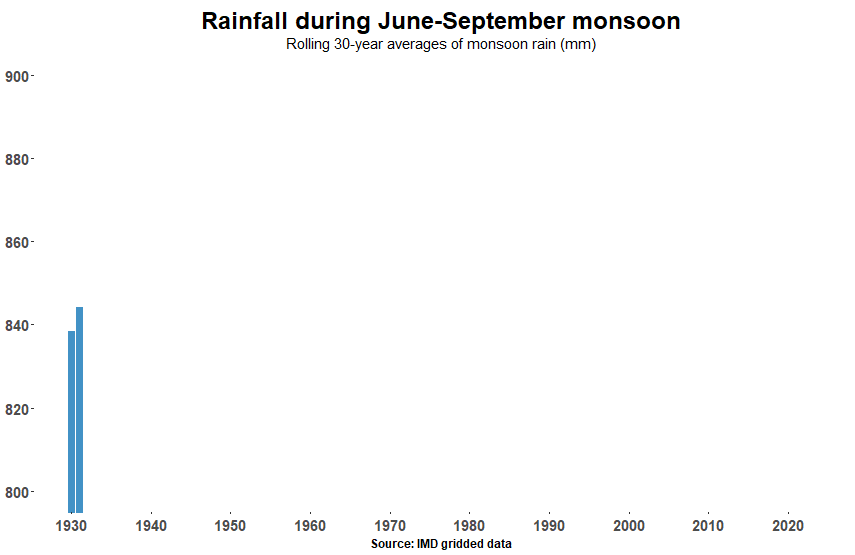
After the 1960s, there has been a different kind of shift in the monsoon season rain. It has declined around 5% compared to the 1933-1962 period and averaged 856 mm in the 1994-2023 period. This is also why the IMD now tests rain’s performance against a lower normal (the average for 1971-2020) than it did earlier (the average for 1961-2010).
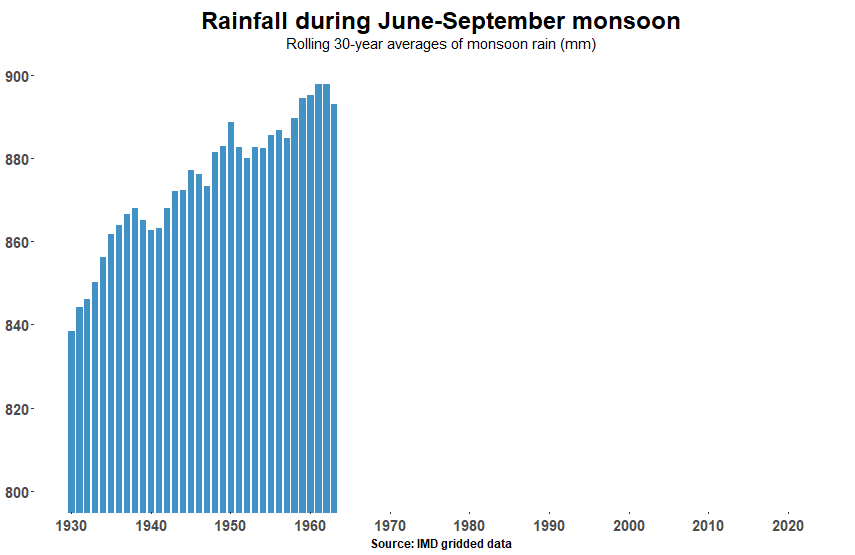
Does this mean that factors other than rain are multiplying rain-related disasters? There is no denying that concretisation, encroachment of drains, and destruction of forests and hills have exacerbated the impact of rain-related disasters. However, rain also has a role to play. For example, rain of heavy or higher intensity has not decreased as much as total monsoon rain. This can be seen in the share of heavy-extreme in total monsoon rain over the years. This share has been rising almost consistently in the 30-year averages of rain.
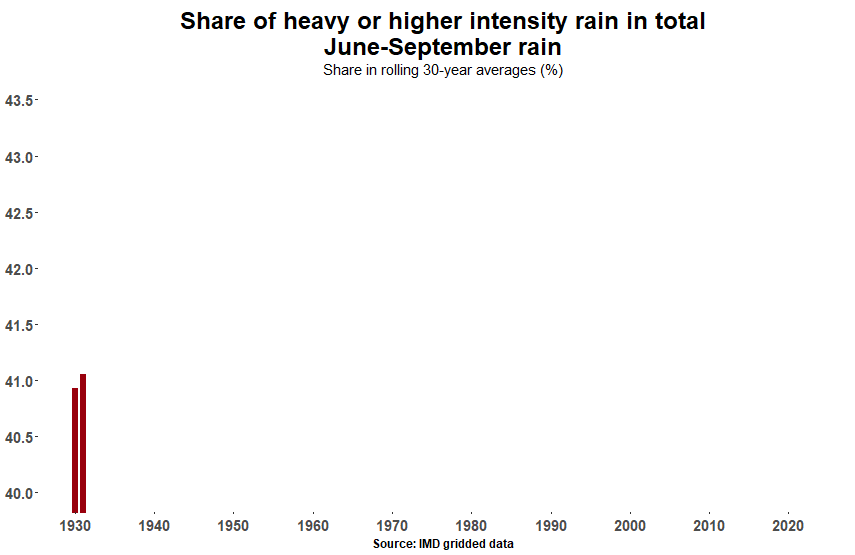
To be sure, the trends discussed above are for the average rainfall over all of India. It is not necessary that all places necessarily follow the same trend. As the accompanying map shows, total monsoon rain has not decreased everywhere. It increased by at least 10% compared to the 1961-2010 average over nearly all of Rajasthan and Gujarat, for example, but hardly at any place in the Gangetic plains or north-eastern states by the same degree.
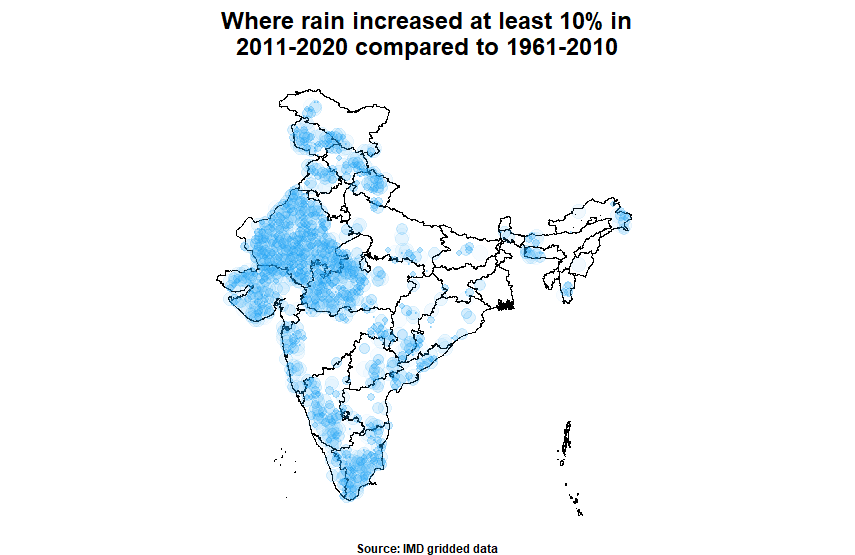
A comparison of the map above with a similar map for heavy-extreme rain shows other interesting trends. Places, where heavy-extreme rain has increased by at least 10% compared to the 1961-2010 average, are distributed with more geographic equality than overall monsoon rain. For example, the northern half of Maharashtra has seen heavy-extreme rain increase over several places, which is not the case if one is looking at rain of all kinds of intensity taken together. Northeastern states also show this trend: heavy-extreme rain in the monsoon has increased here, but overall monsoon rain has not.
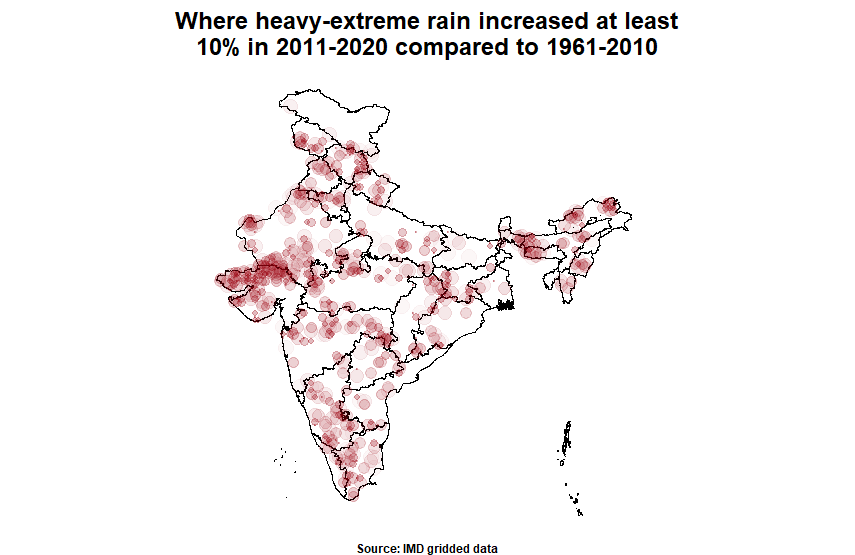
The upshot of the trends discussed above is that there is little point in discussing whether monsoon has become rainier overall. While a rainy monsoon overall is useful for recharging water bodies, it can also kill lives and livelihoods if the rain is concentrated in a few places or over a few days. At least the trends seen in the recent past suggest that for large parts of the country, this is exactly how monsoon rain is changing.
Abhishek Jha, HT’s senior data journalist, analyses one big weather trend in the context of the ongoing climate crisis every week, using weather data from ground and satellite observations spanning decades.
Continue reading with HT Premium Subscription






